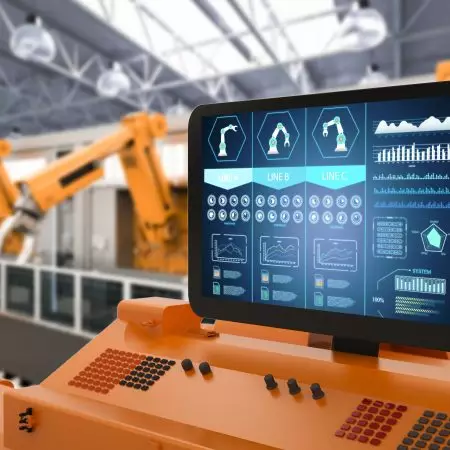Modern design techniques, especially for the development of new products with a high level of complexity, increasingly use 3D design frameworks and Computational Fluid Dynamics (CFD) modelling and simulation software to investigate, for example, aerodynamic phenomena. These are difficult to analyse in the product concept phase and subsequent development stages, except through the creation of a series of physical prototypes for conducting tests aimed at progressively perfecting the product so that it matches and complies with all the design specifications as closely as possible. Therefore, through the development and analysis of virtual models, fluid dynamics simulation usually saves much time and money, by reducing the number of physical prototypes normally required, which are time-consuming and costly to develop, build and test.
Beyond fluid dynamics simulation
However, it should be noted that today, with the level of innovation attained in all sectors of industry, it is not enough to simulate a single physical process, such as fluid dynamics, to improve the development, production, quality or performance of products. All physical components of the processes that occur simultaneously during the use of the product (such as the interaction of multiphase fluids, fluid-solid interaction, thermal flows and vibro-acoustic phenomena) and influence its performance, safety and durability must be integrated in the virtual model. We therefore speak of multiphysics simulation.
Fluid dynamic simulation: case
A clear example of how fluid dynamics can be integrated into a multiphysics simulation that also includes structural and vibro-acoustic aspects is the simulator that Moxoff created for an Italian company that develops and produces motorcycle helmets. “Without the help of this tool,” explains Moxoff, “which covers a range of physics, we would have had to use other software solutions to analyse these aspects, requiring further skills to make them work and communicate with each other. Company’s engineers can perform simulations very easily on the digital dashboard we created, through a graphic interface that allows them to manage the various calculation models and the results obtained, and then extract the relevant engineering parameters for the design of the helmet.”
Thanks to European funding, it was also possible to link the tool to High Performance Computing (HPC) infrastructure to gain a further advantage in terms of reduction of calculation times. The dashboard allows users to choose, simply and immediately, whether to use local computing resources or the external HPC cluster for an analysis, according to their needs.
The advantages gained from the use of the simulator are considerable and evident. “We can achieve huge reductions in time-to-market for newly designed products, as the development times, which used to take five or six months, now take a month and a half or two. This is thanks to the fact that the simulations allow the development of virtual prototypes that are already highly optimised, thus minimising the number of physical prototypes and wind tunnel tests that still need to be conducted”, explains Moxoff.
Evaluating performance with multiphysics simulation
By adopting the tool, the company is now able to examine all the relevant factors in the use of a motorcycle helmet during the design phase. “The simulator we have developed,” continues Moxoff, “not only takes into account fluid dynamics aspects, but also incorporates aspects related to other branches of physics. For example, by combining analysis models for fluid dynamics and thermal phenomena, the simulator allows us not only to study the external aerodynamics of the helmet, but also the internal aerodynamics, thus, how heat is diffused and conveyed through the ducts created in the helmet to allow aeration and dehumidification. By studying the strong interactions between aerodynamic and thermal aspects and analysing the air circulation inside the ducts, useful design and engineering assessments can then made to optimise the dissipation of heat produced by the rider’s head”, and thereby improve comfort. The tool also allows other simulations, such as structural resistance testing or analysis of vibro-acoustic aspects: the impact of the external air on the helmet creates vibrations that must be analysed in order to improve its soundproofing capacity.
Fluid dynamics and multiphysics simulation: mathematical models make the difference
As we have seen, the use of the simulator has allowed the company to significantly reduce the time-to-market for the release of its products. However, this advantage can be increased even more if the calculation times required to perform the simulations are further reduced, through the development of mathematical models made specifically for the analysis of specific project specifications that can speed up the preparation of the simulations.
“Fluid dynamics simulation,” explains Moxoff, “is currently a common analysis method that can be performed with different commercial software packages, which allow you to make, for example, aerodynamic simulations and obtain good levels of precision. However, the focus now is on developing models capable of overcoming the usual limitations of that type of software, mainly for two reasons. The first is the essential need to reduce calculation times, as project schedules are increasingly tight and incompatible with the computational times of commercial software. It is no coincidence that cutting-edge research models, the so-called reduced models, are increasingly being used in this field. These are models built specifically for the problem in question and capable of performing simulation in very short times, particularly when different scenarios need to be explored as project parameters vary”. It cannot simply be done with commercial software, as it often requires specials skills and writing of specific code. “The second reason,” adds Moxoff, “is that commercial software needs very long setup and preparation times, for example, generating the computational grid in order to perform the simulation. Thus, there is a need for tools that can increase the automation of these processes, to support or replace the commercial software and simplify all the pre-processing work. This takes up a lot of the designer’s time, which could be used more profitably for analysing the results of the model itself”.
Contact us for more information




